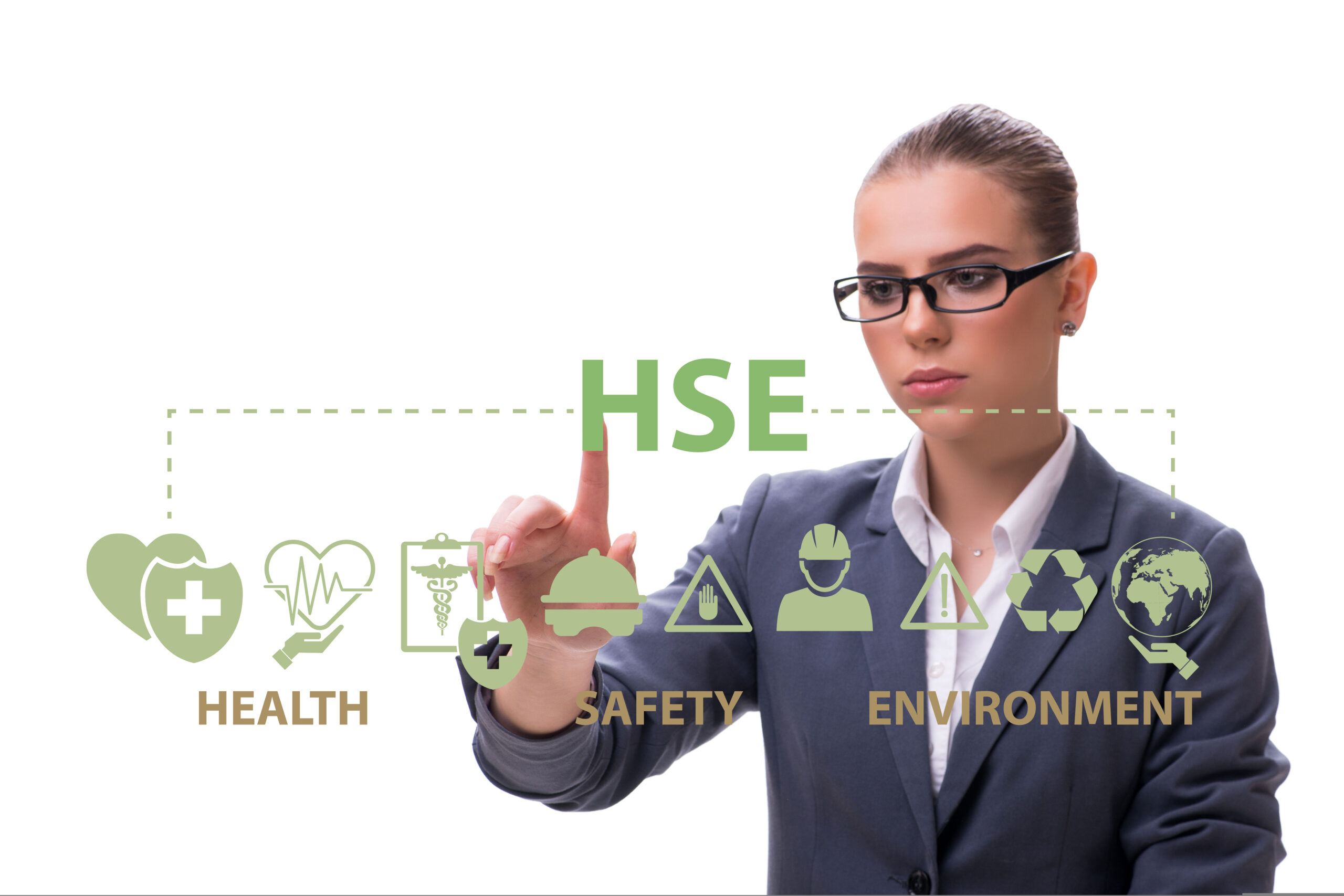Understanding RMP Submissions and Compliance with the Clean Air Act List of Regulated Substances and Threshold Quantities for Accidental Release Prevention Screening Report
Processing chemicals into various finished products is an ever-present feature of modern society. Despite the benefits of these processes, however, the fact remains that these chemicals can cause significant harm to the public in the case of chemical accidents. In light of the risks of accidental releases of hazardous substances in these facilities, the Clean Air Act (CAA), which is primarily focused on regulating sources of air pollution, was amended in 1990 to include provisions relating to chemical accidents. Specifically, Section 112r of the Clean Air Act mandates that the Environmental Protection Agency (EPA) require facilities that process toxic and flammable substances present at or above threshold quantities to create a risk management plan (RMP) identifying the chemical risks within a facility and outlining measures that are being enacted to address these risks. This article will explain what constitutes a regulated substance, who must submit an RMP, the exemptions, and how to comply with the regulation.
What is a CAA-regulated substance?
A CAA-regulated substance is any substance that satisfies any of the following conditions:
- It is on the extremely hazardous substances (EHS) list with a vapor pressure of 10 mmHg or higher (e.g., formaldehyde, which is commonly used in the production of plastics and adhesives).
- It is a toxic gas (such as chlorine dioxide, which is used as a cleaning agent in many industries).
- It has the potential to release hydrogen chloride and a history of causing accidents.
- It has the potential to release sulfur trioxide and sulfuric acid and a history of causing accidents.
- It is a flammable gas (e.g., acetylene, which is used in welding and metal fabrication facilities).
- It is a volatile flammable liquid (such as trichlorosilane, which is used in the production of solar panels).
- It has been mandated for listing by the US Congress.
The most updated list of CAA-regulated substances, categorized by CAS number and chemical names, includes 77 toxic and 63 flammable chemicals. Each chemical on the list is given a threshold quantity at or above which a facility must submit a risk management plan (RMP). Most of these chemicals are on the EHS list with their corresponding threshold quantities and are subject to Community Right-to-Know regulations.
Exemptions
For flammable substances, such as propane and liquified petroleum gases, the regulation does not apply if its sole purpose is for fuel or if it is stored as fuel for retail purposes. The exemption does not apply to facilities that use flammable substances as chemical feedstock. In addition, wholesalers of flammable substances used for fuel are not exempt from the regulation. When held by farmers for agricultural purposes, ammonia is entirely exempt from RMP requirements.
What are the program levels?
Non-exempt facilities that process a regulated substance at or above the threshold quantity are required to submit an RMP, the complexity of which is determined by the relevant self-assessed program level. Recognizing that facilities greatly vary in the breadth of their operations and the risks associated with their processes, the RMP requirements offer facilities great flexibility in creating their RMP. RMPs can be categorized into three program levels, each with its specific requirements.
Program Level 1 applies to processes in facilities that:
- pose no risk to the public if there were to be a “worst-case” release of a regulated substance, and
- have had no accidents with offsite consequences occur within the past five years.
Modelling tools or the EPA’s RMP*Comp tool can be used to assess whether a worse-case release could reach a public receptor. In general, processes in enclosed facilities, located in remote areas, or surrounded by a dike could qualify for Program Level 1. Facilities that fall into this program level must only submit the results of the worst-case release analysis and 5-year accident history.
If a facility is categorized as Program Level 3, it is required to submit Program Level 1 requirements with the addition of an alternative release analysis and a comprehensive accidental release prevention program.
Program Level 3 applies to processes that:
- can adversely affect a public receptor in the event of a worst-case release, or
- have a history of an accidental release within the past five years, and are subject to the Occupational Safety and Health Administration Process Safety Management Standard (OSHA PSM), or
- belong to one of the ten specified North American Industrial Classification System (NAICS) codes.
The OSHA PSM standards are separate from the RMP regulations. However, the requirements of the former are virtually the same as the Program Level 3 RMP requirements and only require minor modifications. Meanwhile, the rationale for selecting processes classified under specific NAICS codes is based on their relatively high historical accounts of accidental release incidents.
The ten NAICS codes subject to Program Level 3 RMP requirements are listed below:
- (32211) Pulp mills
- (32411) Petroleum refineries
- (32511) Petrochemical manufacturing
- (325181) Alkalis and chlorine manufacturing
- (325188) All other basic inorganic chemical manufacturing
- (325192) Cyclic crude and intermediate manufacturing
- (325199) All other basic organic chemical manufacturing
- (325211) Plastic material and resin manufacturing
- (325311) Nitrogenous fertilizer manufacturing
- (32532) Pesticide and other agricultural chemical manufacturing
Program Level 2 applies to processes in facilities that:
- do not qualify for Program Level 1 and Program Level 3 RMP requirements, and
- are not subject to the OSHA PSM standard, and
- are not included in one of the ten NAICS process classification codes, and
- pose a risk to the public in the event of a worst-case release, or
- had a release of a regulated substance within the past five years.
Facilities that fall under this level must submit the results of the worst-case and alternative release analysis, the 5-year accident history, and a more streamlined prevention program that includes the following components:
- process safety information,
- hazard review,
- operating procedures,
- training and maintenance programs,
- compliance audits, and
- incident investigations.
Streamlining RMP submission
Facilities covered by the RMP regulations are required to update and resubmit their RMP to the RMP*eSubmit platform every five years. Facilities must also modify their RMP whenever changes occur in the chemical processes or if a regulated substance in the facility reaches a threshold quantity. Therefore, it is critical to note the real-time quantities of each regulated substance in a facility. This ensures the appropriate actions are being taken regarding RMP submissions. However, maintaining a regularly updated log can be overwhelming when a facility handles multiple regulated substances in different processes.
Using chemical management software that tracks real-time quantities of regulated substances and will automatically notify users when a threshold quantity has been reached can significantly streamline compliance. This ensures that RMP submissions can be adequately updated and penalties for inaccurate submissions or failed inspections can be avoided. Additionally, chemical management software can include built-in features that expedite the reporting process by automatically entering the appropriate data into the forms or spreadsheets that can then be downloaded and/or submitted to the authorizing agency.
The RMP regulations protect the general public from the accidental release of toxic and flammable substances into communities by making it a necessity for facilities that handle such substances to:
- Identify potential impacts of a chemical accident,
- Put a system in place to prevent them from happening, and
- Outline procedures for emergencies.
With the assistance of chemical management software, users can track regulated substances and notify the appropriate persons whenever threshold quantities are reached, thereby guaranteeing timely edits and resubmissions of RMP reports. Not only does this save facilities the potential price incurred from penalties, but it also provides valuable information that emergency responders and employees need to prepare for and respond accordingly in chemical release accidents.
Sources
- Acetylene and industry uses. (2023). nexAir. https://www.nexair.com/learning-center/acetylene-and-industry-uses/.
- Agency for Toxic Substances and Disease Registry. (2011, November 29). Public health statement for chlorine dioxide and chlorite. Centers for Disease Control and Prevention. https://wwwn.cdc.gov/TSP/PHS/PHS.aspx?phsid=580&toxid=108
- Blois, M. (2022, September 19). The US solar industry has a supply problem. ACS Publications. https://pubs.acs.org/doi/10.1021/cen-10033-cover
- Emergency Planning and Notification, 40 C.F.R. §355 (2008, November 3). https://www.ecfr.gov/current/title-40/chapter-I/subchapter-J/part-355
- List of Regulated Toxic Substances and Threshold Quantities for Accidental Release Prevention. 40 C.F.R. §68.130 (2023, August 23). https://www.ecfr.gov/current/title-40/chapter-I/subchapter-C/part-68/subpart-F/section-68.130#
- National Library of Medicine. (2012). Formaldehyde. NIH. https://www.ncbi.nlm.nih.gov/books/NBK304432/
- United States Environmental Protection Agency. (2023, February 25). RMP*eSubmit. EPA. https://www.epa.gov/rmp/rmpesubmit
- United States Environmental Protection Agency. (2022, December 14). Chapter 7: Prevention program (Program 3). EPA. https://www.epa.gov/sites/default/files/2013-11/documents/chap-07-final.pdf
- United States Environmental Protection Agency. (2023, June 9). RMP*Comp. EPA. https://www.epa.gov/rmp/rmpcomp
Publisher Bio
The SafetyStratus Research Advisory Group (RAG) brings together thought leaders from the global environmental, health, and safety community to promote best practices and provide key insights in the profession and the industries they serve. The Research Advisory Group also advocates, where practical, the intersection of and advances with the use of technology, such as the SafetyStratus enterprise EHS software platform. Group membership consists of representatives from across varied disciplines and market sectors as well as select members of the SafetyStratus team.
The primary objectives of the SafetyStratus RAG partnership are to:
- Build a strategic partnership between EHS practitioners and the SafetyStratus team.
- Provide engaging and practical content to the global EHS community.
- Provide discipline and market feedback specific to SafetyStratus products and services.
While the objectives of the RAG are varied, the primary public-facing outcome will be available through engaging and practical content found on the SafetyStratus resource pages. Various articles, papers, and other valuable resources will be produced and shared as part of an ongoing effort to cultivate a robust community. Ultimately, the SafetyStratus RAG will expand to have a broader reach and provide opportunities for more inclusion by all interested EHS professionals in a collaborative community environment.



